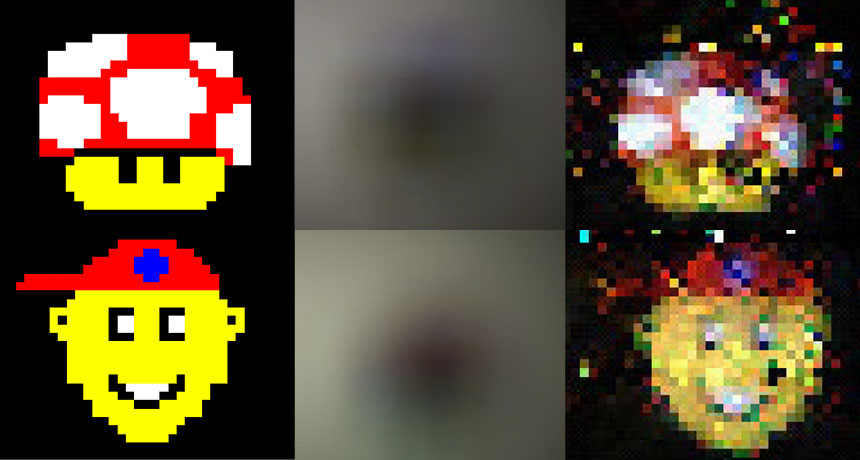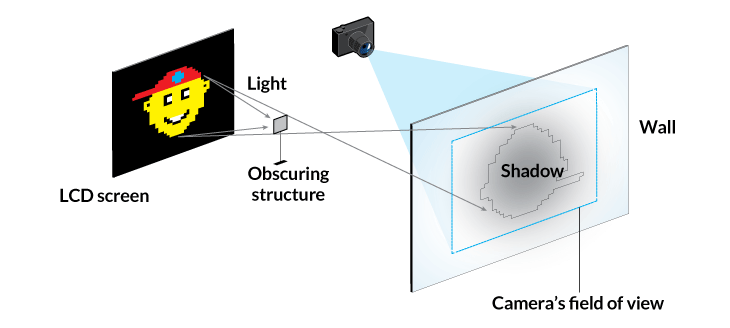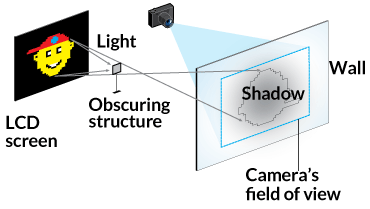
I SPY By analyzing a multicolored jumble of light and shadow on a wall (middle), a new computer program can create a rough reconstruction (right) of an image displayed on an out-of-frame LCD screen (left).
C. Saunders, J. Murray-Bruce and V.K. Goyal/Nature 2019








